Rite Aid Bundle
Who Really Owns Rite Aid Now?
Understanding a company's ownership is crucial for grasping its future. A major Rite Aid SWOT Analysis can be a game-changer. Rite Aid Corporation, a once-dominant drugstore chain, has recently navigated a significant transformation. This report unravels the complex story of Rite Aid's ownership, from its roots to its current structure.
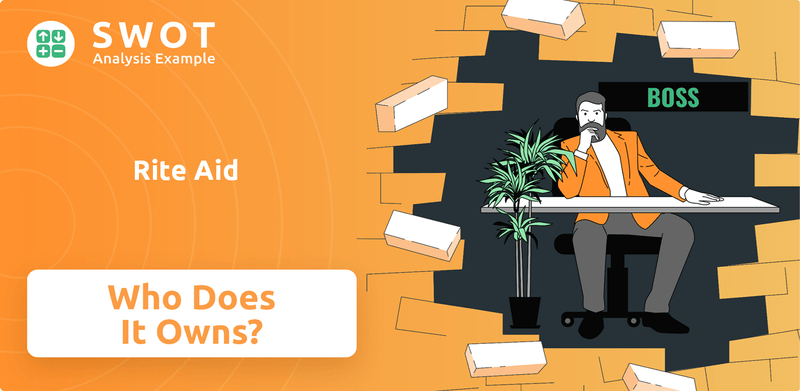
Rite Aid's journey, marked by periods of growth and challenges, including its bankruptcy filings in October 2023 and May 2025, has dramatically reshaped its ownership landscape. Exploring "Who owns Rite Aid" reveals critical insights into the company's strategic direction and the implications of these shifts. The evolution of Rite Aid's ownership provides a fascinating case study in corporate restructuring and the dynamics of the retail pharmacy sector, answering questions like "Did Walgreens buy Rite Aid?" and "Who is the current owner of Rite Aid?"
Who Founded Rite Aid?
The story of Rite Aid begins on September 12, 1962, with Alex Grass at the helm in Scranton, Pennsylvania. Initially known as Thrift D Discount Center, the drugstore quickly carved a niche by offering a variety of health and beauty aids and other non-food items. This early focus set the stage for the company's growth.
Grass's prior venture, Rack Rite Distributors, Inc., which supplied grocery stores, provided a foundation. The repeal of fair trade laws in 1962 created opportunities for discount stores. Rite Aid capitalized on this shift, expanding its footprint and influence in the retail landscape.
The initial ownership of Rite Aid was centered on Alex Grass's vision and investments. By 1963, the company had expanded to include five more drugstores, extending its reach into New York. By 1965, Rite Aid had expanded into five additional states. The company officially changed its name to Rite Aid Corporation and went public in 1968, listing on the American Stock Exchange (AMEX) before moving to the New York Stock Exchange (NYSE) in 1970.
Alex Grass founded Rite Aid in 1962. The initial store was called Thrift D Discount Center.
By 1963, Rite Aid had expanded to six stores. The company went public in 1968.
Rite Aid was listed on the American Stock Exchange in 1968. It moved to the NYSE in 1970.
By 1981, Rite Aid was the third-largest retail drugstore chain. The company reached $1 billion in sales by 1983.
Alex Grass remained a key figure as chairman and CEO. Rite Aid's early success was driven by its founder's vision.
The company's rapid expansion and public offering suggest a successful early funding phase. Specific equity splits for early backers are not publicly detailed.
The initial ownership of Rite Aid was primarily with Alex Grass. The company's early success was fueled by strategic expansion and its ability to adapt to market changes. Rite Aid's journey from a single store to a major retail chain highlights its growth. For more insights into the market, consider reading about the Target Market of Rite Aid.
- Alex Grass founded Rite Aid in 1962.
- The company went public in 1968.
- By 1981, Rite Aid was the third-largest drugstore chain.
- The company reached $1 billion in sales by 1983.
Rite Aid SWOT Analysis
- Complete SWOT Breakdown
- Fully Customizable
- Editable in Excel & Word
- Professional Formatting
- Investor-Ready Format
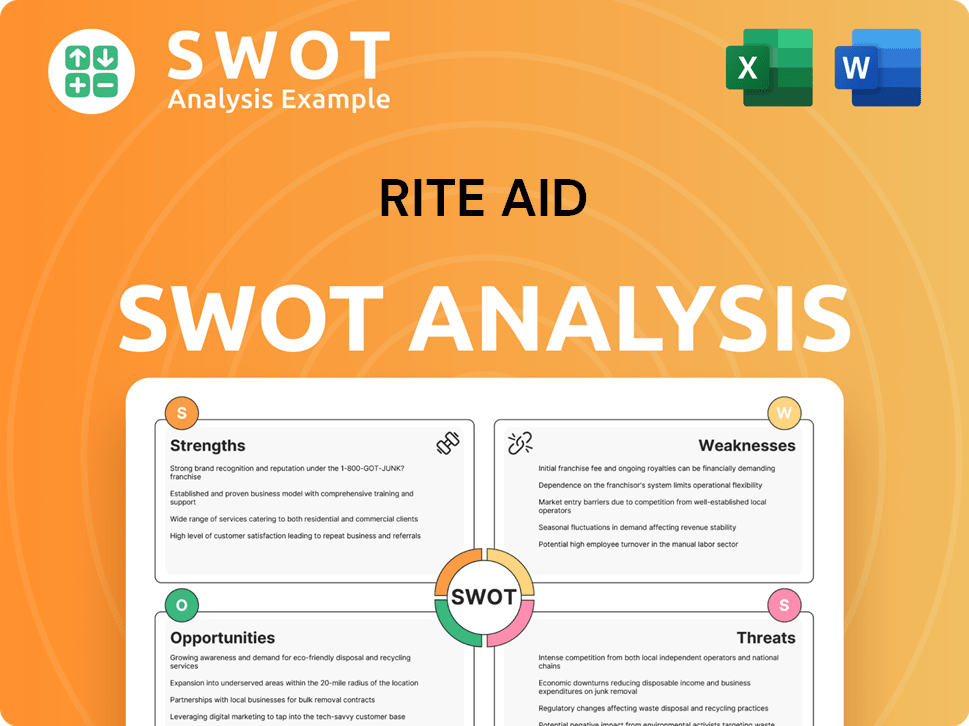
How Has Rite Aid’s Ownership Changed Over Time?
The ownership structure of Rite Aid has seen considerable changes since it became a public entity in 1968, trading on the New York Stock Exchange under the symbol RAD. Initially, institutional investors, mutual funds, and individual shareholders held the majority of shares. For instance, in 2023, major investment firms like The Vanguard Group held approximately 12.9%, BlackRock Inc. held about 8.7%, and Invesco Ltd. held around 5.1% of the company's shares.
A pivotal moment occurred in 2007 when Rite Aid acquired Brooks Pharmacy and Eckerd Pharmacy stores from the Jean Coutu Group, a move that gave Jean Coutu a 32% equity stake in Rite Aid. Further expansion happened in 2015 with the acquisition of EnvisionRx, later rebranded as Elixir, for $2 billion. However, attempted acquisitions by Walgreens in 2015 and Albertsons in 2018 were unsuccessful. Walgreens did acquire nearly 2,000 Rite Aid stores in 2017 for $5.18 billion.
| Event | Year | Impact on Ownership |
|---|---|---|
| Acquisition of Brooks and Eckerd | 2007 | Jean Coutu Group gained a 32% equity stake. |
| Acquisition of EnvisionRx | 2015 | Expanded Rite Aid's portfolio. |
| Walgreens Acquisition of Stores | 2017 | Walgreens acquired nearly 2,000 stores. |
| Chapter 11 Bankruptcy Filing | 2023 | Ownership shifted to creditors. |
The most recent significant shift in the Rite Aid ownership structure came with its Chapter 11 bankruptcy filings. The company filed for bankruptcy in October 2023 and emerged as a private entity in September 2024, after eliminating about $2 billion in debt and securing $2.5 billion in exit financing. As of May 2025, following a second Chapter 11 filing, former creditors became the new equity owners. JPMorgan Chase holds approximately 18.3%, and Sixth Street holds approximately 16.5% of the equity. This transition to private ownership by creditors, including firms like Brigade Capital and HG Vora, significantly altered the company's governance. For more detailed information, you can check out this Brief History of Rite Aid.
Rite Aid's ownership has evolved significantly, marked by acquisitions and bankruptcy filings.
- Early ownership included institutional and individual shareholders.
- Acquisitions, such as those of Brooks and Eckerd, led to shifts in ownership.
- Bankruptcy filings in 2023 and 2024 resulted in creditors becoming the new owners.
- Current ownership is primarily held by creditors, including investment firms.
Rite Aid PESTLE Analysis
- Covers All 6 PESTLE Categories
- No Research Needed – Save Hours of Work
- Built by Experts, Trusted by Consultants
- Instant Download, Ready to Use
- 100% Editable, Fully Customizable
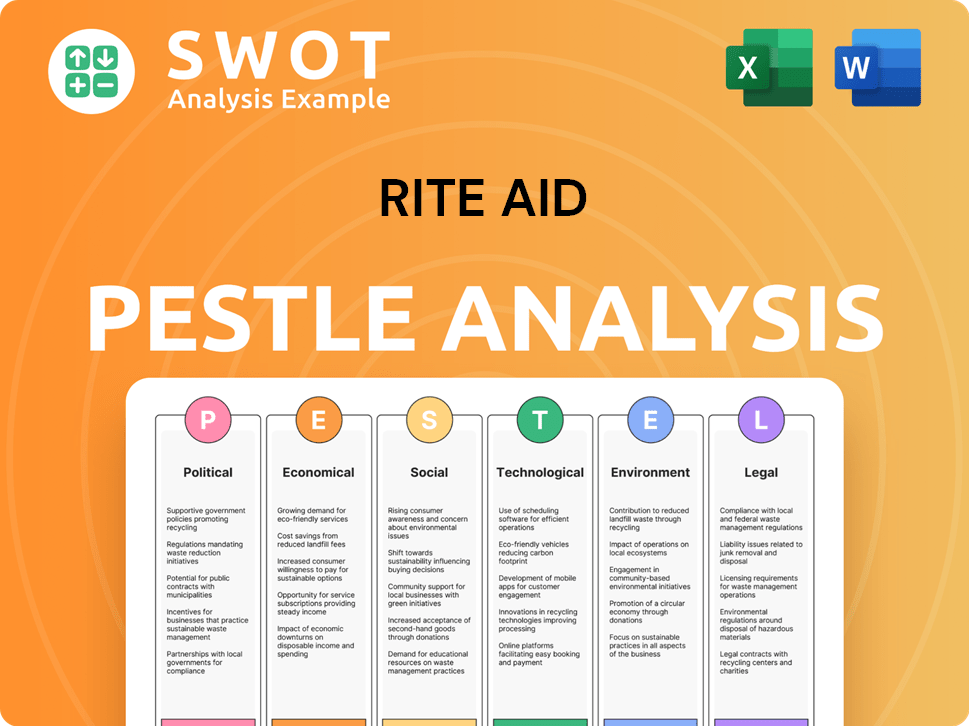
Who Sits on Rite Aid’s Board?
Before its shift to a private entity, the board of directors at what was formerly known as Rite Aid included representatives from significant shareholders and independent parties. In September 2018, following unsuccessful merger attempts, the company announced a board restructuring, which involved the nomination of three new independent directors and the appointment of Bruce Bodaken as chairman, replacing John Standley. This move aimed to bolster independent oversight and address shareholder concerns.
Following its emergence from Chapter 11 bankruptcy in September 2024, the ownership and governance structure of the company underwent a significant transformation. All existing common shares were canceled, and ownership was transferred to certain Rite Aid creditors. This shift means the voting power now resides with these new equity owners, primarily former creditors. For instance, as part of the restructuring plan, Brigade Capital and other equity holders appointed David Stetson to the board of directors, effective August 30, 2024.
| Board Member | Role | Affiliation |
|---|---|---|
| David Stetson | Board Member | Appointed by Brigade Capital and other equity holders |
| Bruce Bodaken (Former) | Chairman | Previously appointed to enhance independent oversight |
| John Standley (Former) | Former CEO and Chairman | Replaced by Bruce Bodaken |
While the specific composition of the current private board and any special voting rights are less transparent than when the company was public, it's clear that control has shifted substantially to the creditor group. The board's decisions are now mainly influenced by the interests of these new owners, who wield voting power through their equity stakes. This transition marks a significant change in the company's governance and ownership structure. For more details on the company's journey, you can read about the Rite Aid history.
Rite Aid's ownership structure has fundamentally changed since its emergence from bankruptcy in 2024.
- Control has shifted to the creditor group.
- Voting power now rests with the new equity owners.
- The board of directors is primarily influenced by the interests of these new owners.
- The company is now a private entity.
Rite Aid Business Model Canvas
- Complete 9-Block Business Model Canvas
- Effortlessly Communicate Your Business Strategy
- Investor-Ready BMC Format
- 100% Editable and Customizable
- Clear and Structured Layout
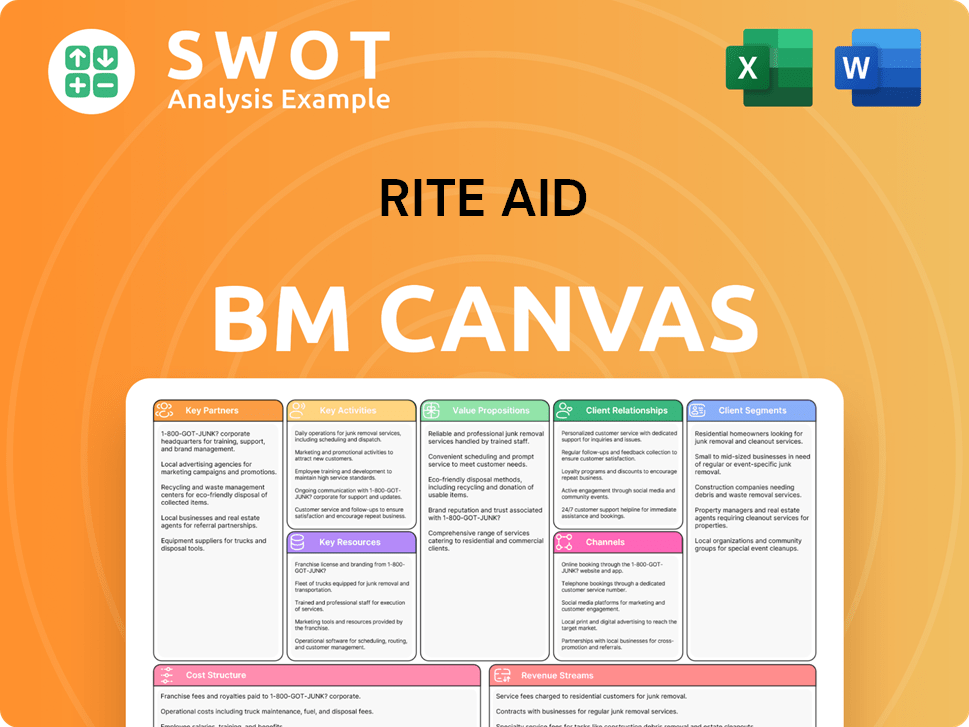
What Recent Changes Have Shaped Rite Aid’s Ownership Landscape?
Over the past few years, the ownership structure of Rite Aid has undergone significant transformations, primarily driven by its financial challenges and subsequent bankruptcy filings. The company's journey through Chapter 11 bankruptcy, initiated in October 2023, led to a shift from public to private ownership. Upon emerging from bankruptcy in September 2024, Rite Aid's creditors became the new owners, a move that involved eliminating about $2 billion in debt and securing $2.5 billion in exit financing. However, the company filed for Chapter 11 protection again in May 2025. This restructuring has reshaped the landscape of Rite Aid's growth strategy and its ownership dynamics.
As of May 2025, the primary owners of Rite Aid include former creditors. Notably, JPMorgan Chase holds roughly 18.3% of the equity, while Sixth Street owns approximately 16.5%. This shift reflects a strategic response to the company's heavy debt burden and the financial strain from extensive opioid litigation costs. To streamline operations and generate capital, Rite Aid has been actively selling off assets. These sales include its Elixir PBM business, which went to MedImpact Healthcare Systems for $575 million in February 2024, and part of its Health Dialog business, which was divested to Carenet Health in May 2024. Furthermore, Rite Aid has reduced its store footprint significantly, closing over 520 locations by September 2024, with the current number of stores at approximately 1,240 across 15 states as of May 2025.
The recent changes in Rite Aid's ownership reflect broader industry trends, like the increasing influence of institutional investors. The move to private ownership by creditors marks a significant departure, driven by the need to address a substantial debt load and opioid litigation expenses. Currently, Rite Aid is pursuing a strategic sale process for most of its assets, attracting interest from various retail pharmacy, grocery, and general retail companies. This suggests potential further changes in ownership as the company aims to finalize its restructuring and potentially wind down its remaining operations.
| Metric | Details | As of |
|---|---|---|
| Number of Stores | Approximately 1,240 | May 2025 |
| Debt Eliminated in First Restructuring | Approximately $2 Billion | September 2024 |
| Exit Financing Secured | $2.5 Billion | September 2024 |
Currently, Rite Aid is primarily owned by its creditors. JPMorgan Chase and Sixth Street are among the major equity holders.
Rite Aid filed for Chapter 11 bankruptcy in October 2023 and again in May 2025, leading to major ownership shifts.
Rite Aid has significantly reduced its store count, closing over 520 locations by September 2024, and plans to close or sell more.
Rite Aid has sold off assets, including its Elixir PBM business and part of its Health Dialog business, as part of its restructuring.
Rite Aid Porter's Five Forces Analysis
- Covers All 5 Competitive Forces in Detail
- Structured for Consultants, Students, and Founders
- 100% Editable in Microsoft Word & Excel
- Instant Digital Download – Use Immediately
- Compatible with Mac & PC – Fully Unlocked
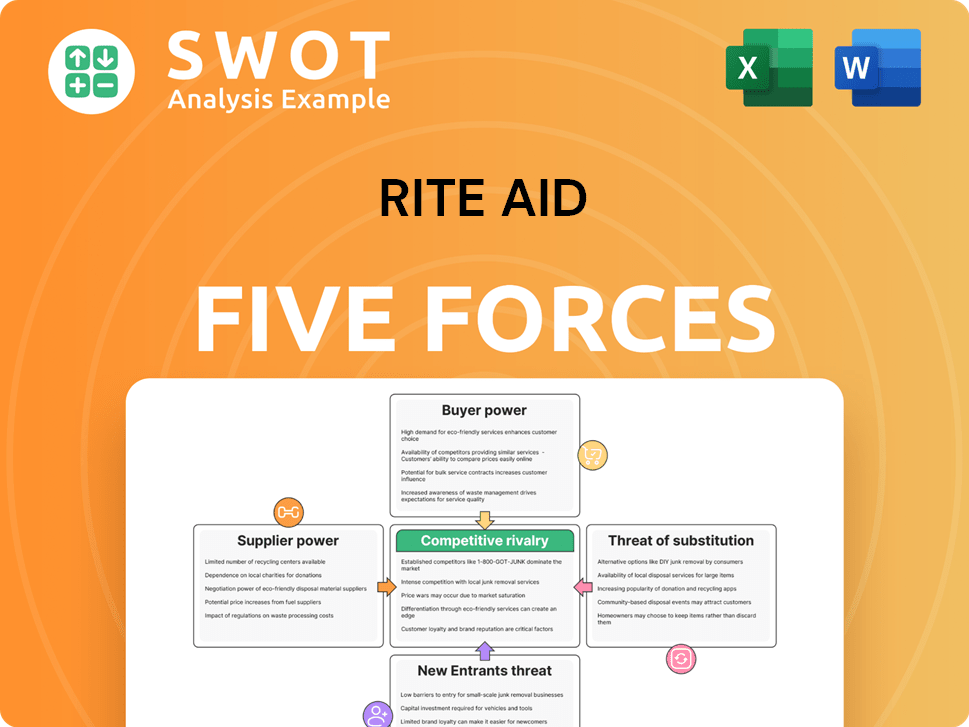
Related Blogs
- What are Mission Vision & Core Values of Rite Aid Company?
- What is Competitive Landscape of Rite Aid Company?
- What is Growth Strategy and Future Prospects of Rite Aid Company?
- How Does Rite Aid Company Work?
- What is Sales and Marketing Strategy of Rite Aid Company?
- What is Brief History of Rite Aid Company?
- What is Customer Demographics and Target Market of Rite Aid Company?
Disclaimer
All information, articles, and product details provided on this website are for general informational and educational purposes only. We do not claim any ownership over, nor do we intend to infringe upon, any trademarks, copyrights, logos, brand names, or other intellectual property mentioned or depicted on this site. Such intellectual property remains the property of its respective owners, and any references here are made solely for identification or informational purposes, without implying any affiliation, endorsement, or partnership.
We make no representations or warranties, express or implied, regarding the accuracy, completeness, or suitability of any content or products presented. Nothing on this website should be construed as legal, tax, investment, financial, medical, or other professional advice. In addition, no part of this site—including articles or product references—constitutes a solicitation, recommendation, endorsement, advertisement, or offer to buy or sell any securities, franchises, or other financial instruments, particularly in jurisdictions where such activity would be unlawful.
All content is of a general nature and may not address the specific circumstances of any individual or entity. It is not a substitute for professional advice or services. Any actions you take based on the information provided here are strictly at your own risk. You accept full responsibility for any decisions or outcomes arising from your use of this website and agree to release us from any liability in connection with your use of, or reliance upon, the content or products found herein.